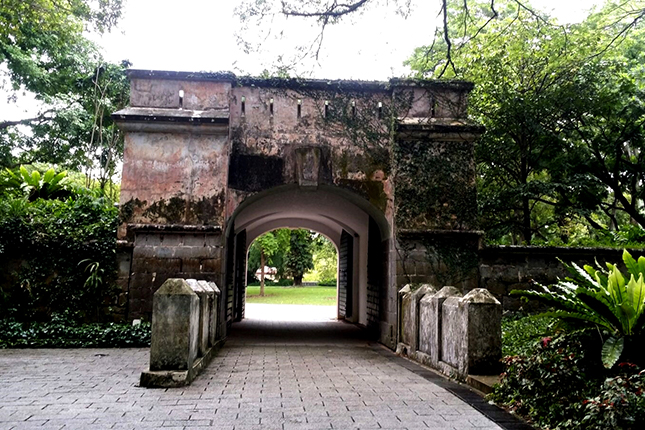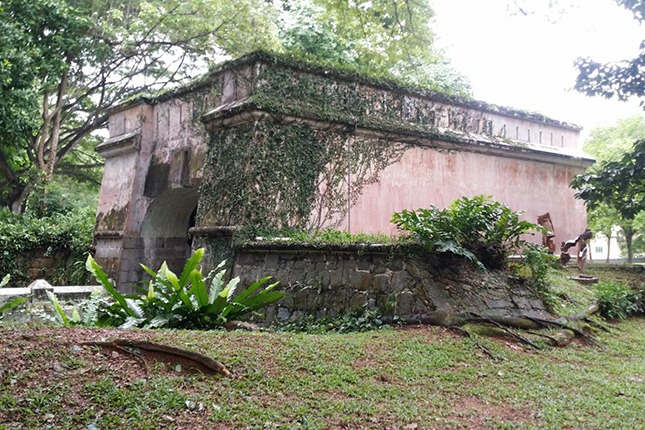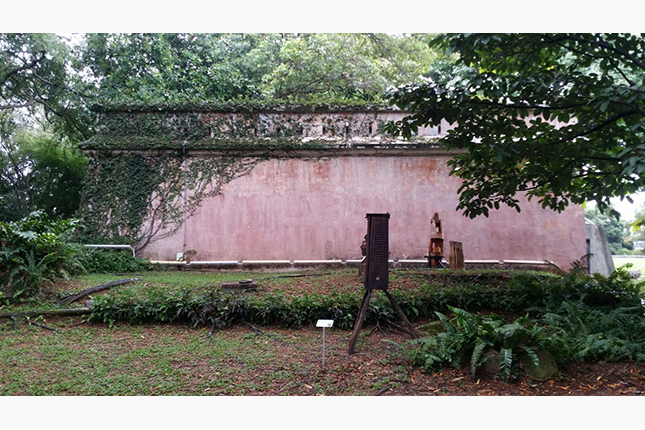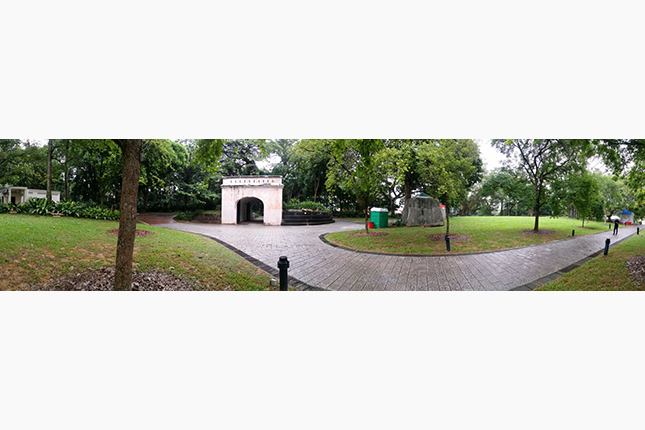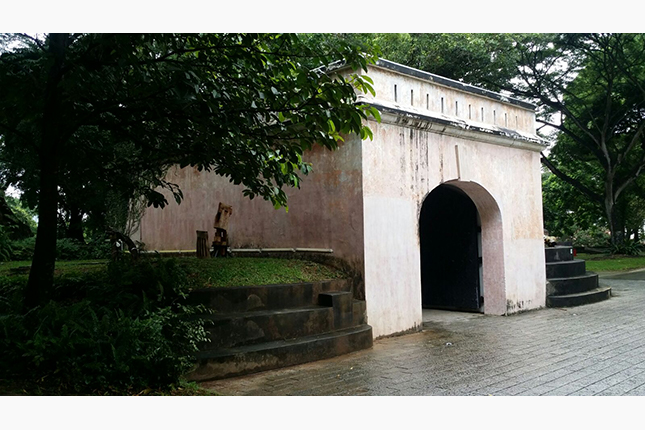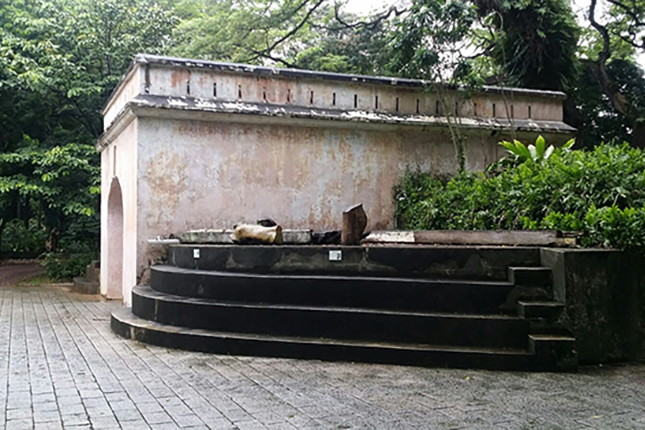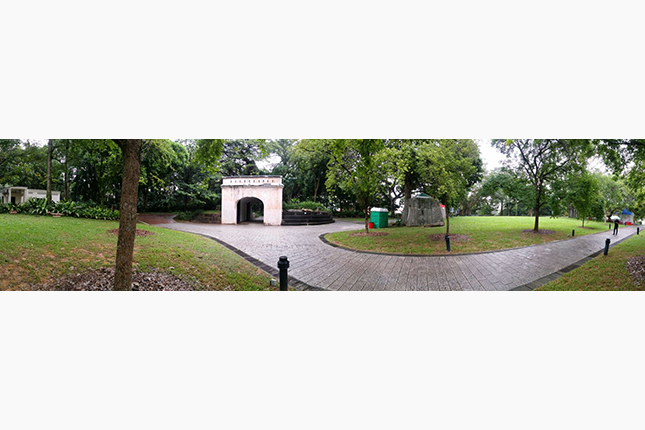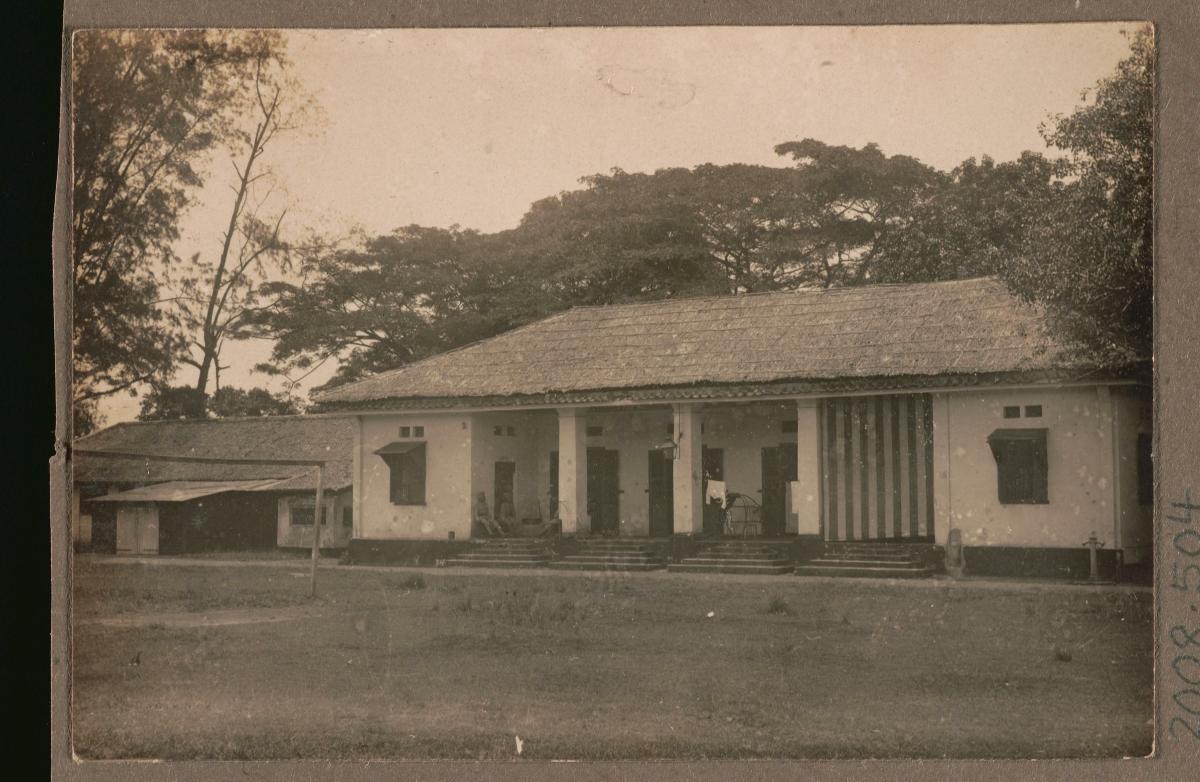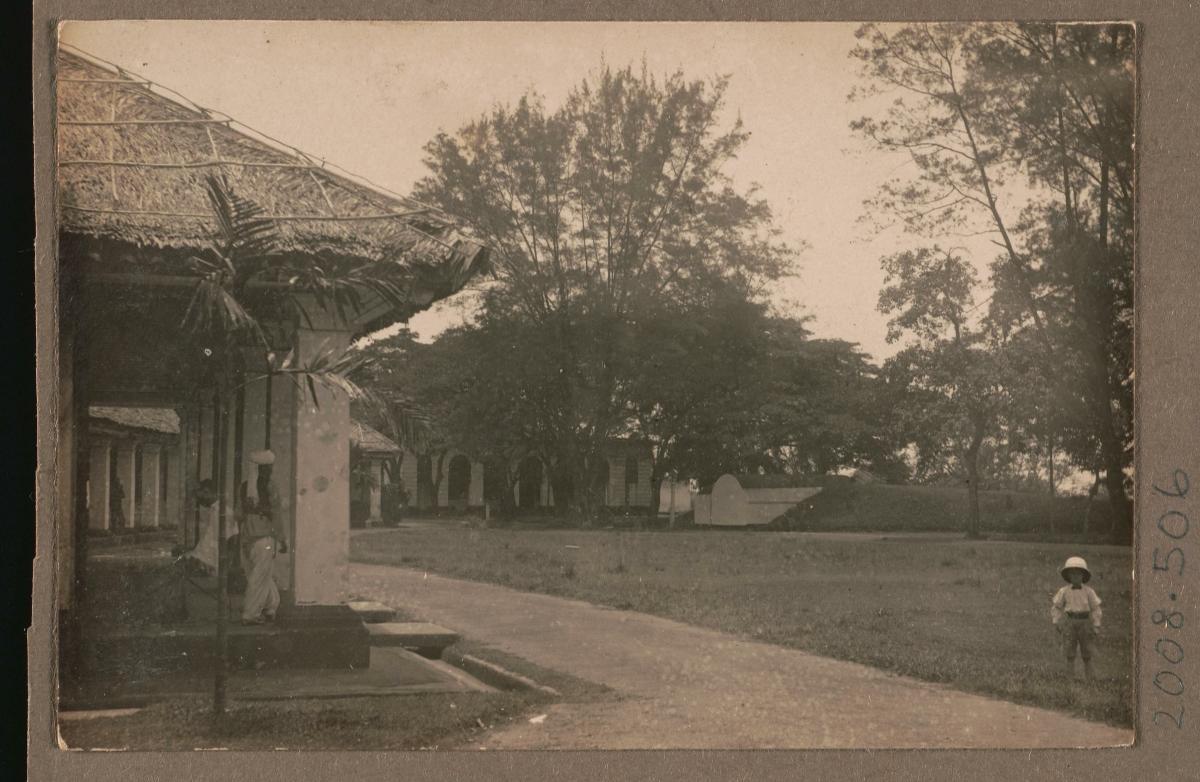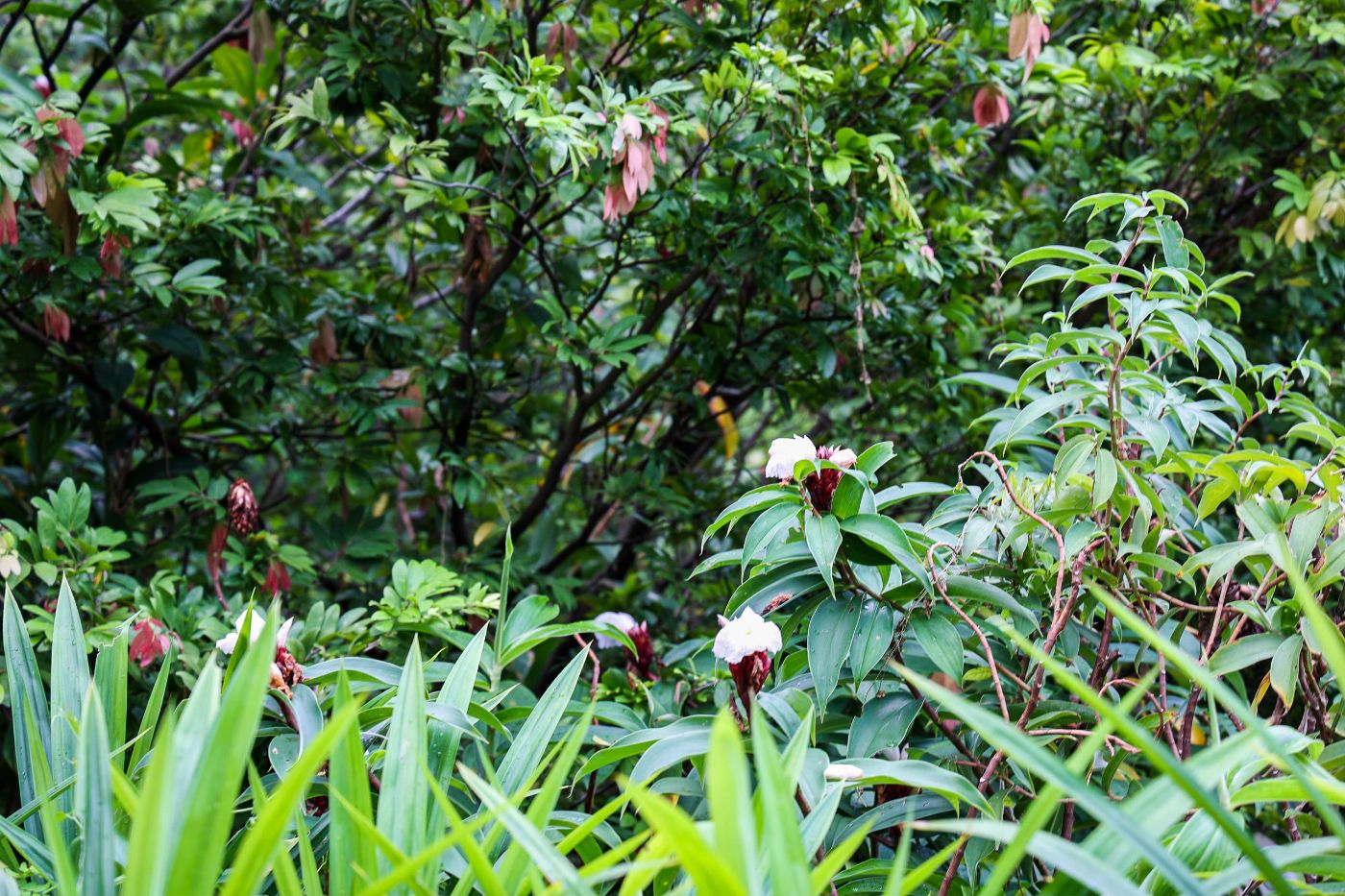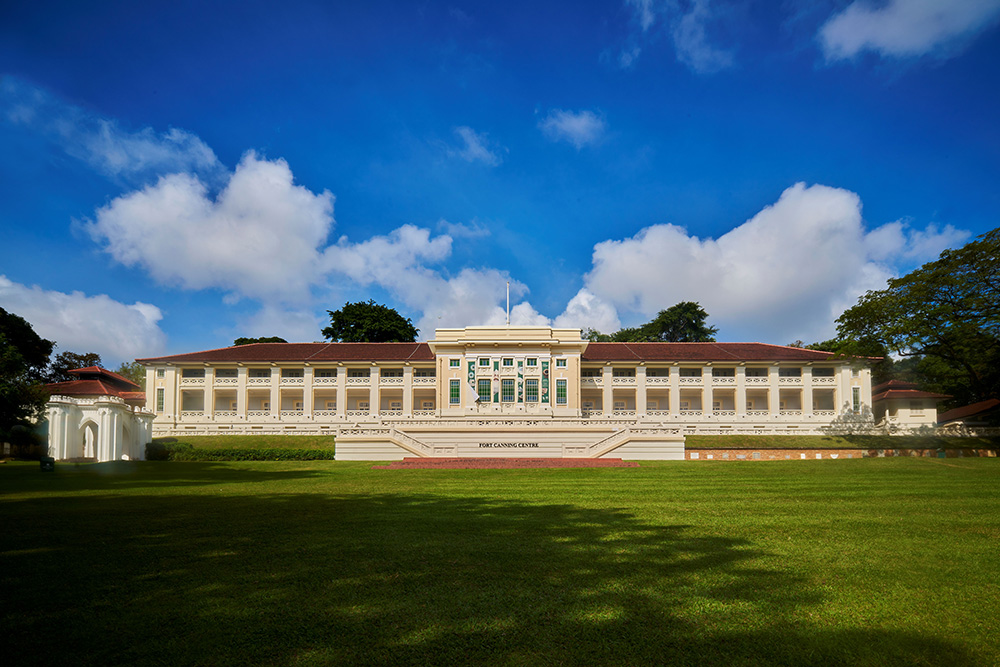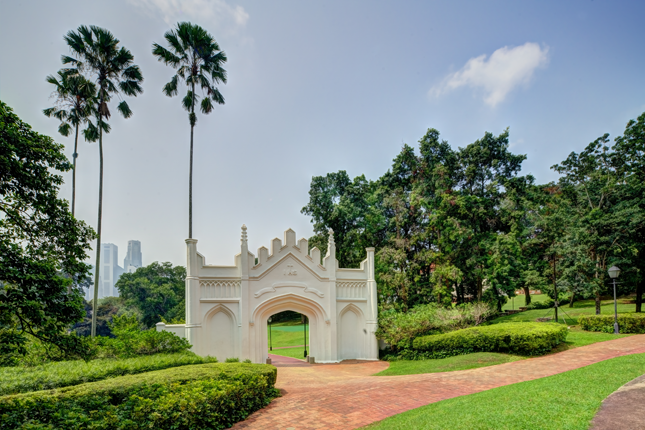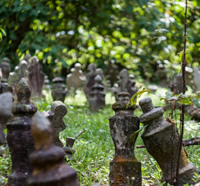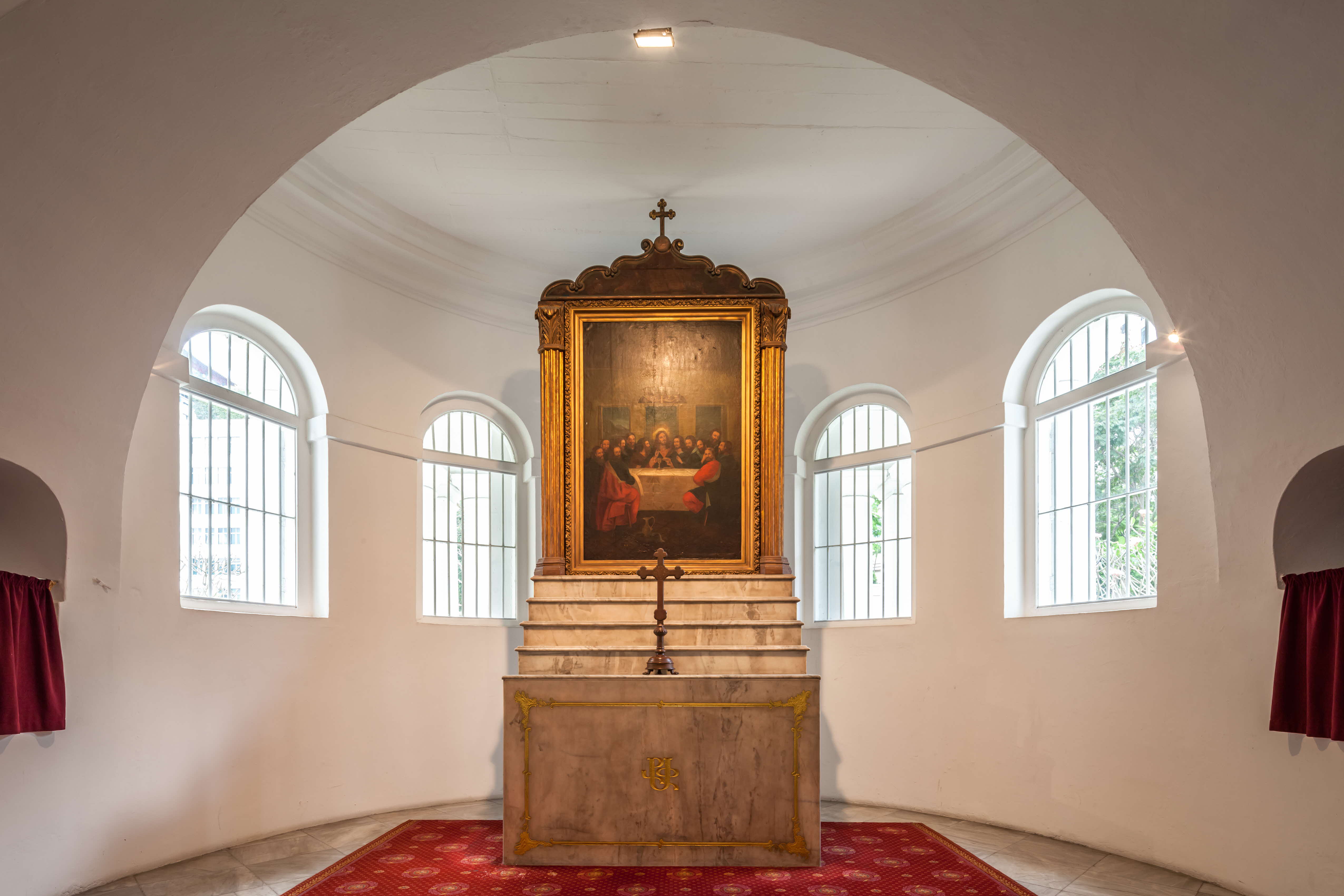Bukit Larangan, or Forbidden Hill, was home to several key personalities, such as the Malay kings in the 14th century and Sir Stamford Raffles in the 1820s. Over the course of history, the hill received several name changes: it was renamed Government Hill in 1822, and Fort Canning Hill in the 1860s, when the construction of Fort Canning, a British fortification, was completed.
Fort Canning was named after then Governor-General and later first Viceroy of India Viscount Charles John Canning (1856-1862). It was built to protect Singapore from a sea attack, oversee the security of the town, and served as a place of refuge for Europeans in Singapore in the event of social disturbances, such as the Indian Mutiny in 1857.
The fort had extensive defences; there was a moat that ran around the thick fort walls, which were able to withstand artillery bombardment. In addition, the main fort housed amenities such as officers’ quarters. The firing of a 68-pound carronade at 5am daily indicated the start of the day for those within a two-mile radius. Up until 1896, the cannons were also used to signal the outbreak of fire.
However, Fort Canning never saw battle and was decommissioned in 1907. In 1926, most of the fort was torn down to make way for a reservoir. The gothic archway of its entrance, designed by Colonel G. C. Collyer, a fragment of the old wall, and a pair of nine-pound cannons remain as the only lingering testimony of the old fort.
Nonetheless, it remained a significant historical site – during the Battle for Singapore, the British established a bunker to work out battle strategies against the Japanese. Lieutenant-General Arthur Percival moved from his headquarters at Sime Road to the Fort Canning Bunker on 11 February 1942.
Present-day Fort Canning is currently being used as an outdoor venue for concerts, plays, and festivals. It is still remembered for its historical significance.
Buildings and sites featured on Roots.SG are part of our efforts to raise awareness of our heritage; a listing on Roots.SG does not imply any form of preservation or conservation status, unless it is mentioned in the article. The information in this article is valid as of May 2019 and is not intended to be an exhaustive history of the site/building.




